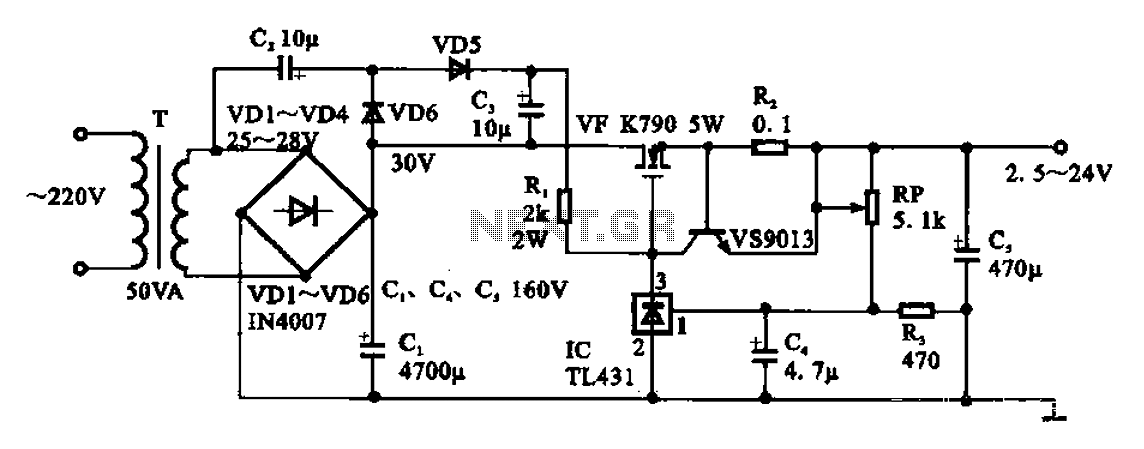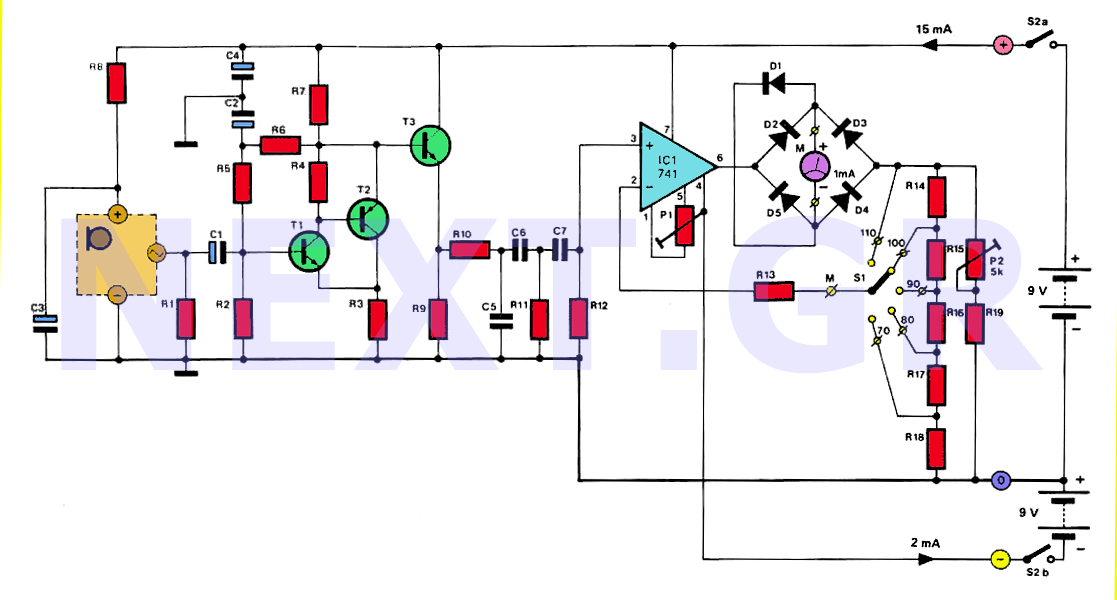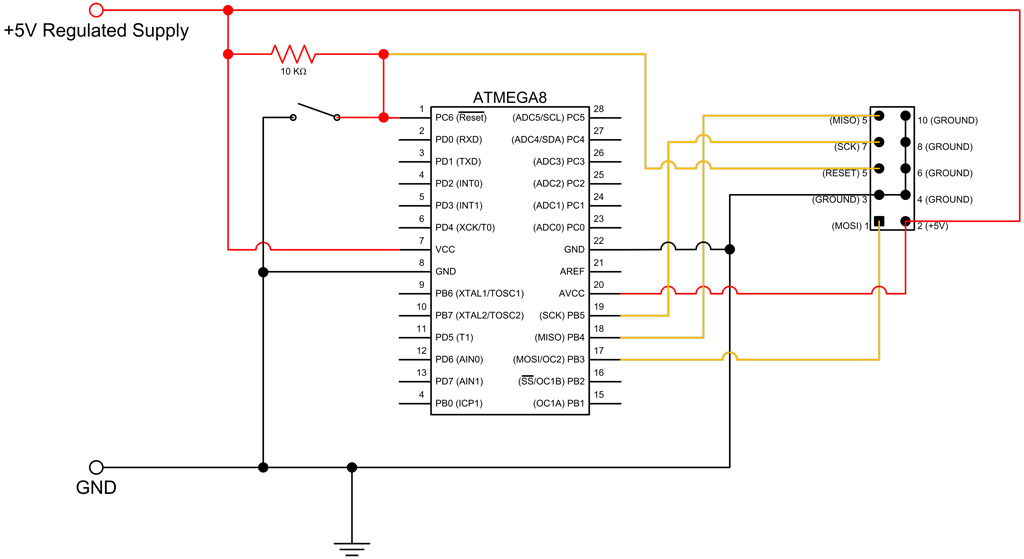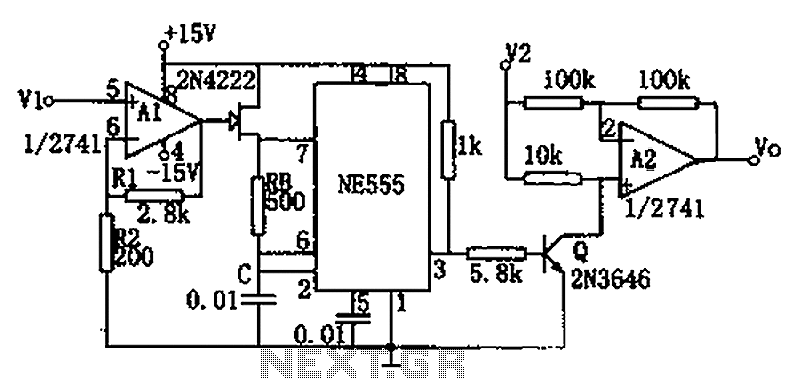
4093 Cmos Vfo Circuit
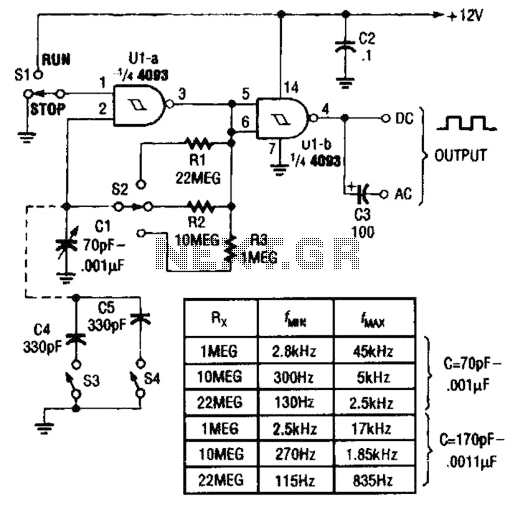
Two gates of a Quad 4093 are utilized in an astable multivibrator configuration. CI is a three-gang 365 pF variable capacitor with its sections connected in parallel. Additionally, S3 and S4 serve to switch in optional extra capacitors.
The described circuit employs two NAND gates from a Quad 4093 integrated circuit, configured to function as an astable multivibrator. This configuration generates a continuous square wave output, making it suitable for applications such as clock pulses or tone generation. The astable multivibrator operates without a stable state, continuously oscillating between its high and low states.
The variable capacitor, CI, which consists of three parallel sections rated at 365 pF, allows for fine-tuning of the oscillation frequency. By adjusting the capacitance value, the duty cycle and frequency of the output waveform can be modified, providing flexibility in circuit performance.
Switches S3 and S4 are incorporated into the design to enable the addition of external capacitors, which can further modify the timing characteristics of the multivibrator. This feature allows for a broader range of oscillation frequencies, enhancing the versatility of the circuit for different applications. The use of external capacitors can also help in achieving desired frequency stability or specific timing intervals as required by the application.
In conclusion, the astable multivibrator circuit featuring the Quad 4093 and the variable capacitor arrangement, supplemented by optional capacitors through switches, provides a robust solution for generating square wave signals with adjustable frequency and duty cycle. Two gates of a Quad 4093 are used in an astable multivibrator. CI is a three-gang 365 pF variable capacitor with sections paralleled. S3 and S4 switch in optional extra capacitors. 🔗 External reference
The described circuit employs two NAND gates from a Quad 4093 integrated circuit, configured to function as an astable multivibrator. This configuration generates a continuous square wave output, making it suitable for applications such as clock pulses or tone generation. The astable multivibrator operates without a stable state, continuously oscillating between its high and low states.
The variable capacitor, CI, which consists of three parallel sections rated at 365 pF, allows for fine-tuning of the oscillation frequency. By adjusting the capacitance value, the duty cycle and frequency of the output waveform can be modified, providing flexibility in circuit performance.
Switches S3 and S4 are incorporated into the design to enable the addition of external capacitors, which can further modify the timing characteristics of the multivibrator. This feature allows for a broader range of oscillation frequencies, enhancing the versatility of the circuit for different applications. The use of external capacitors can also help in achieving desired frequency stability or specific timing intervals as required by the application.
In conclusion, the astable multivibrator circuit featuring the Quad 4093 and the variable capacitor arrangement, supplemented by optional capacitors through switches, provides a robust solution for generating square wave signals with adjustable frequency and duty cycle. Two gates of a Quad 4093 are used in an astable multivibrator. CI is a three-gang 365 pF variable capacitor with sections paralleled. S3 and S4 switch in optional extra capacitors. 🔗 External reference
Warning: include(partials/cookie-banner.php): Failed to open stream: Permission denied in /var/www/html/nextgr/view-circuit.php on line 713
Warning: include(): Failed opening 'partials/cookie-banner.php' for inclusion (include_path='.:/usr/share/php') in /var/www/html/nextgr/view-circuit.php on line 713
